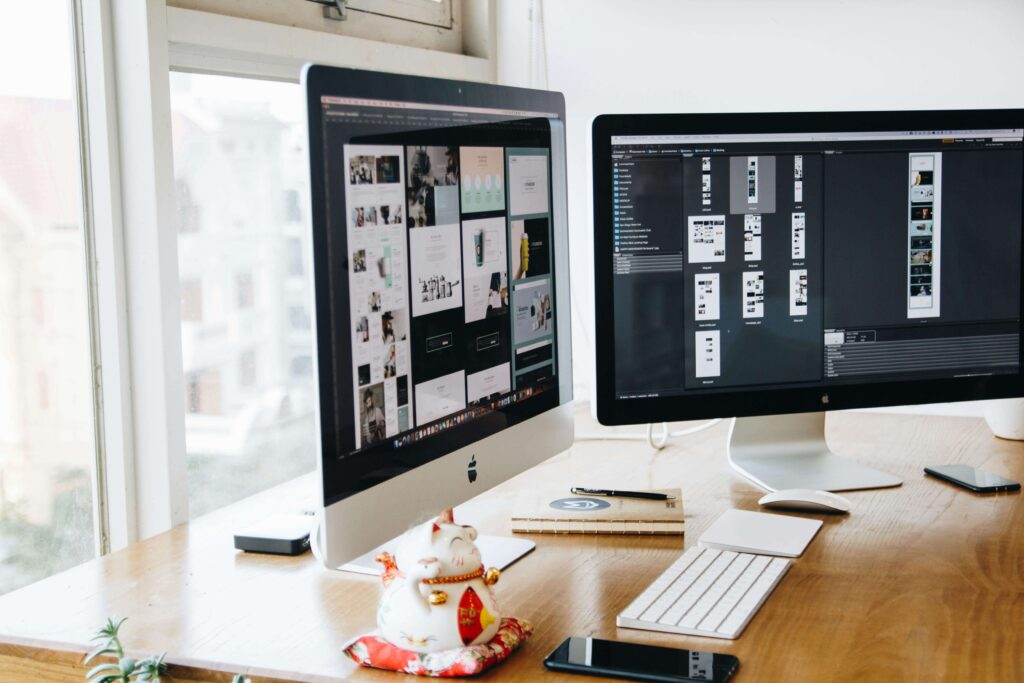Let’s be real for a second—design can feel like a free-for-all when your business is growing fast. One day you’re working solo with a clean set of brand colors and fonts. A few months later, you’ve got three designers, two developers, and a marketing intern all creating stuff that… kinda looks similar, but not quite.
You’re trying to keep your product looking and working great, but things are starting to get messy. Buttons are styled slightly differently on different pages. Headlines vary in size. You’re wasting time solving the same problems again and again.
This is exactly where a design system saves the day.
And no—it’s not just for big brands with huge teams. In fact, if you’re growing, a design system might be one of the smartest investments you make.
At TheSpaceCode, we’ve helped businesses of all sizes create design systems that bring clarity, consistency, and speed to their product development. Let’s walk you through what that actually means—and why it matters now more than ever.
What’s a Design System, Really?
Think of a design system like a toolkit. It’s a set of building blocks—components, rules, colors, typography, layout grids, even tone of voice—that everyone in your team uses to build your product or website.
It’s not just a style guide.
It’s not just a Figma file.
And it’s definitely not just “making everything match.”
It’s a shared language between designers, developers, marketers, and product managers. When done right, it helps you move faster without breaking your brand.
Why Your Business Should Care (Even If You’re Not a Designer)
If you’ve ever looked at your product and thought, “Wait… why does this button look different here?”—this blog is for you.
Here’s what a good design system brings to the table:
1. Consistency = Trust
You might not notice when everything looks consistent—but your users will notice when it doesn’t. Inconsistent fonts, colors, or spacing might seem like a small thing, but they can make your brand feel unprofessional or unreliable.
A design system ensures everything feels intentional. That builds trust.
2. You Move Faster
Ever wasted time rebuilding a button or trying to match a card layout from another page? Design systems stop that nonsense.
Your team gets a library of reusable components. That means faster design, faster development, and fewer Slack messages like “Hey, what padding should I use here?”
3. Your Team Stays on the Same Page
As your business grows, more people touch your product. Designers, developers, writers, marketers—all trying to keep things on-brand.
A design system gives them a common playbook. So even if your team works across time zones, the product stays cohesive.
4. It’s Easier to Onboard New People
Bringing on a new developer? Junior designer? Marketing intern? A design system helps them get up to speed fast. They don’t need to guess how to build things—they just plug into the system.
When’s the Right Time to Start One?
Honestly? Probably yesterday.
But if you’re seeing any of these signs, it’s definitely time:
- Your UI feels inconsistent from page to page
- Developers are building components from scratch over and over
- Your designers keep making small variations of the same element
- It’s taking longer than it should to launch simple updates
The good news: you don’t have to go all-in from day one. Start small. Document your most-used buttons. Standardize your typography. Build from there.
What a Simple Design System Looks Like
You don’t need something fancy to start. Here’s a great beginner setup:
- Color palette (with names and hex codes)
- Typography rules (font families, sizes, line heights)
- Component library (buttons, form fields, cards, nav bars)
- Spacing guidelines (margins, padding, grid system)
- Do’s and Don’ts (real-world usage examples)
Over time, you can expand with motion rules, tone of voice, accessibility standards, and more.
What We Do at TheSpaceCode
We help brands turn chaos into clarity. If you’re building a new product or scaling a growing one, our team can:
- Audit your current designs and code
- Build (or fix) your design system
- Create a shared component library that works for designers and developers
- Train your team to use it like pros
Our goal? Make your digital presence look and feel like it was built by one team—even if it wasn’t.
Final Thought: Design Isn’t Just About Looks
It’s about how your users feel when they use your product. And when everything fits together? That feeling is effortless.
Design systems aren’t just about making things pretty. They’re about saving time, reducing friction, and building trust.
If you’re growing, planning to scale, or just tired of wasting time on the same design headaches—it’s time to build a system that works for you.
